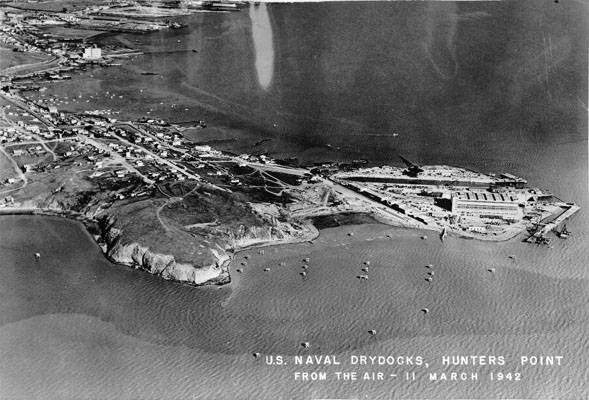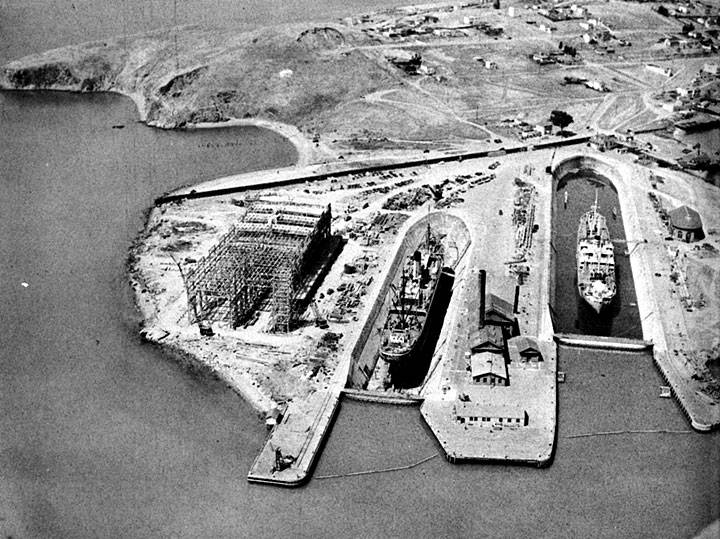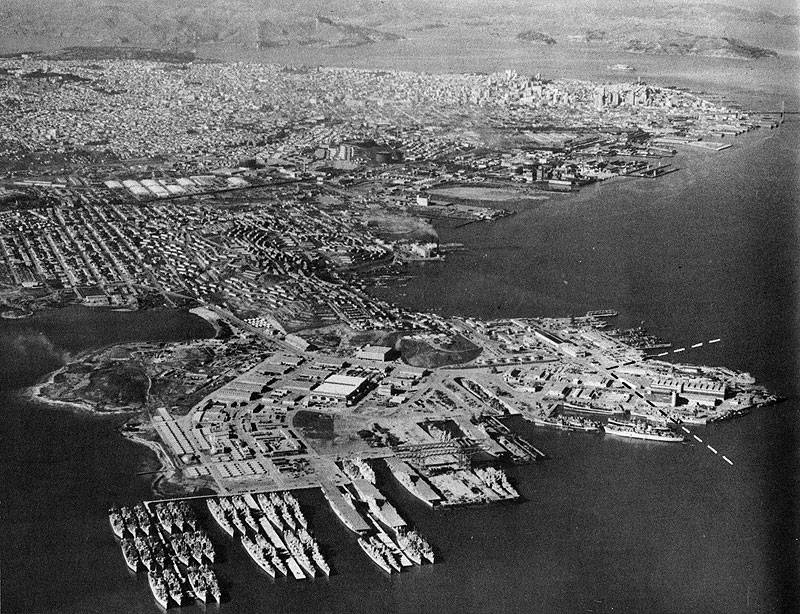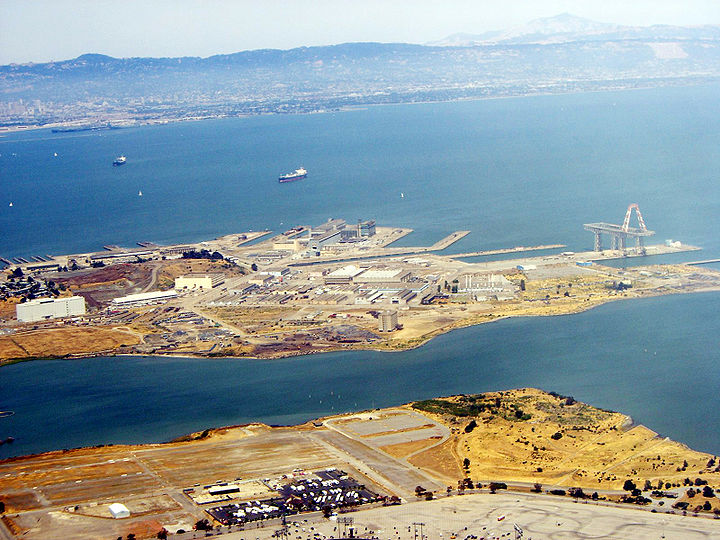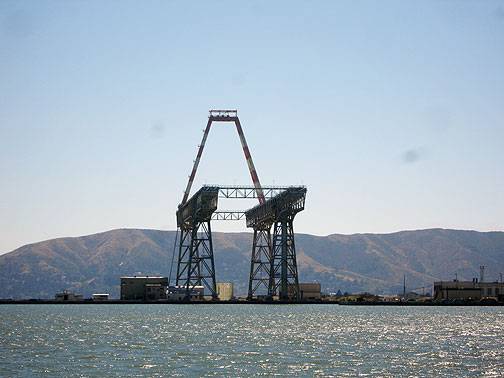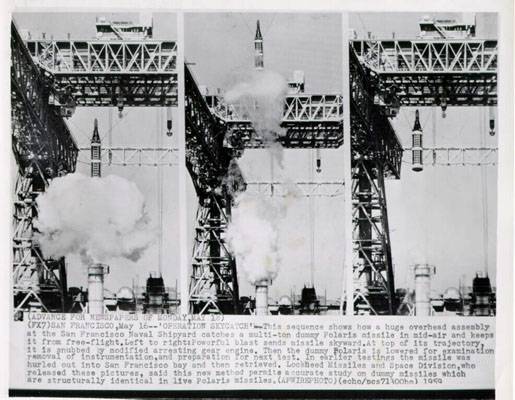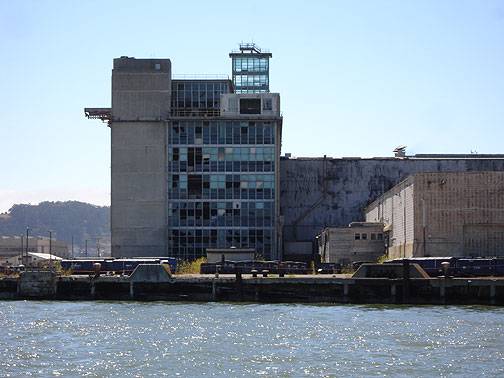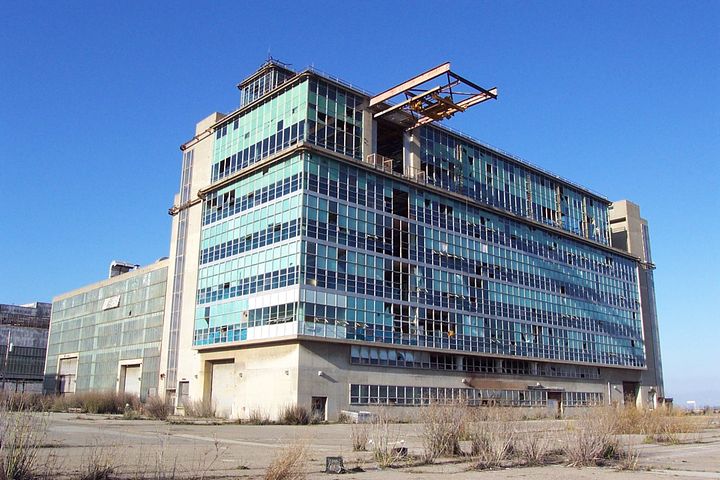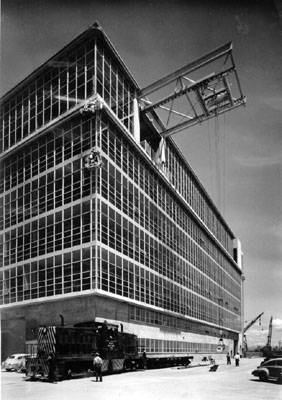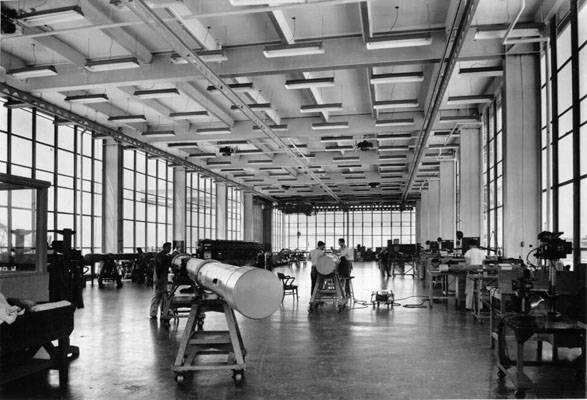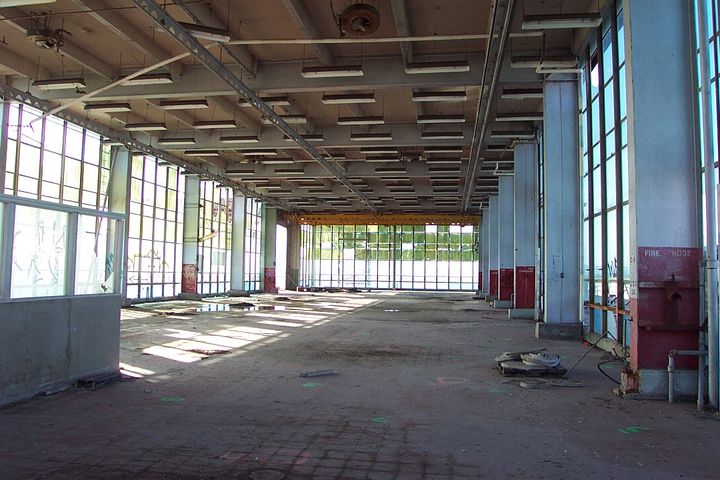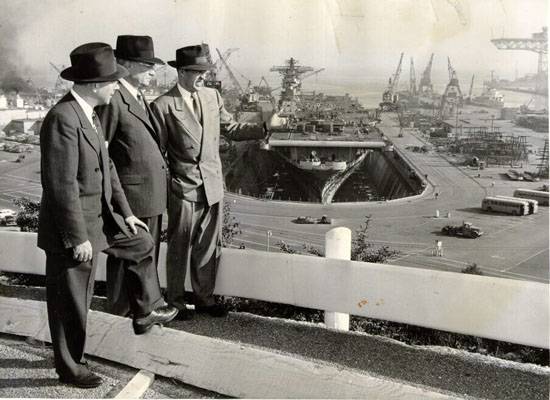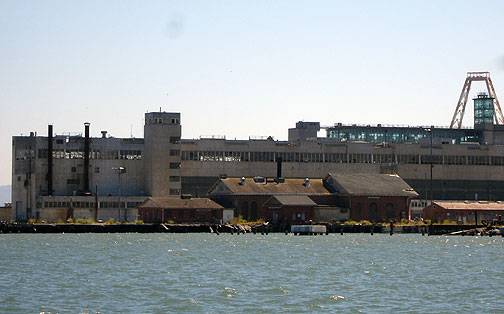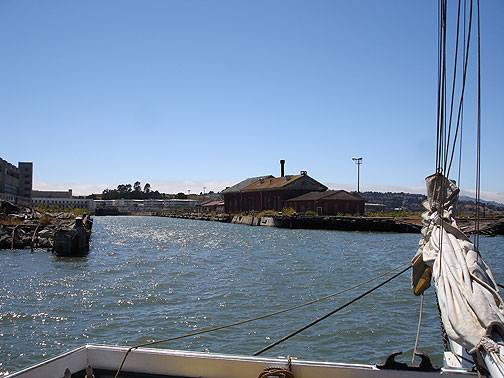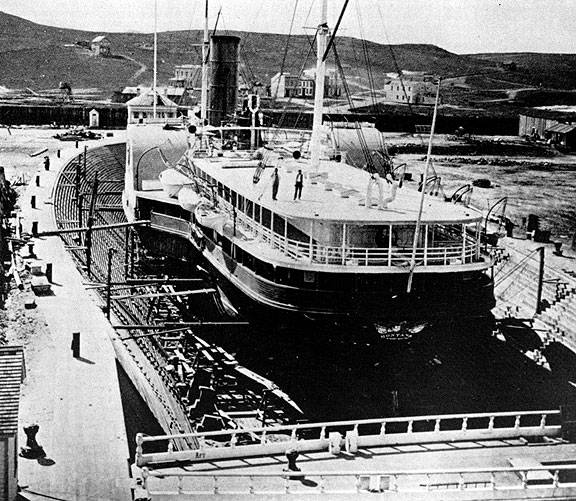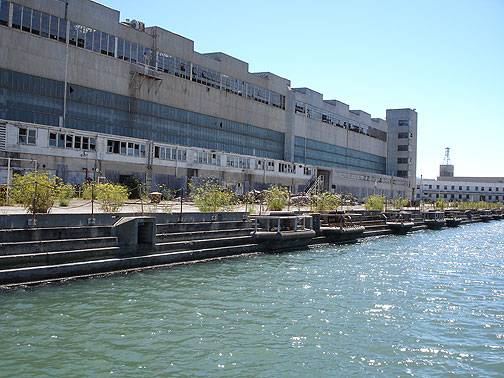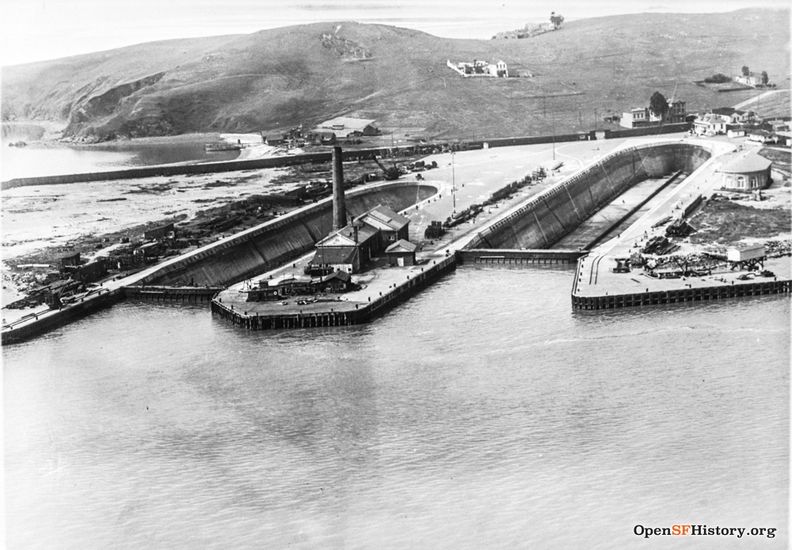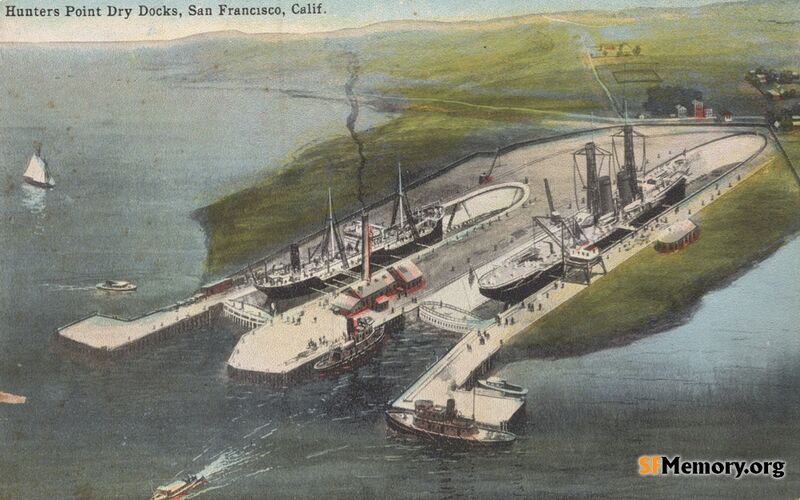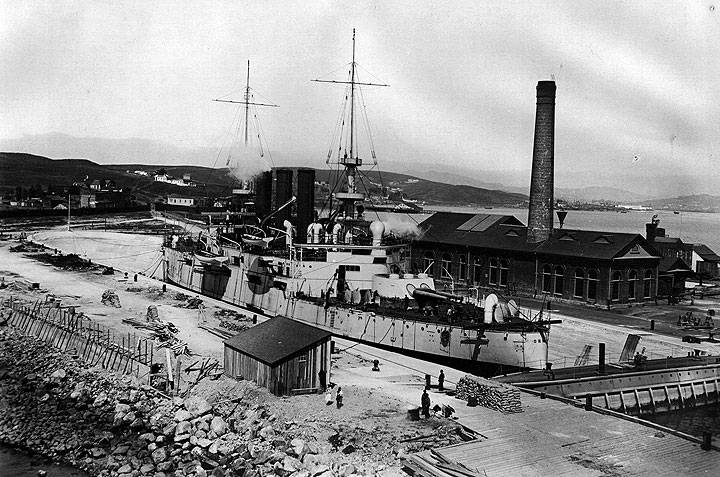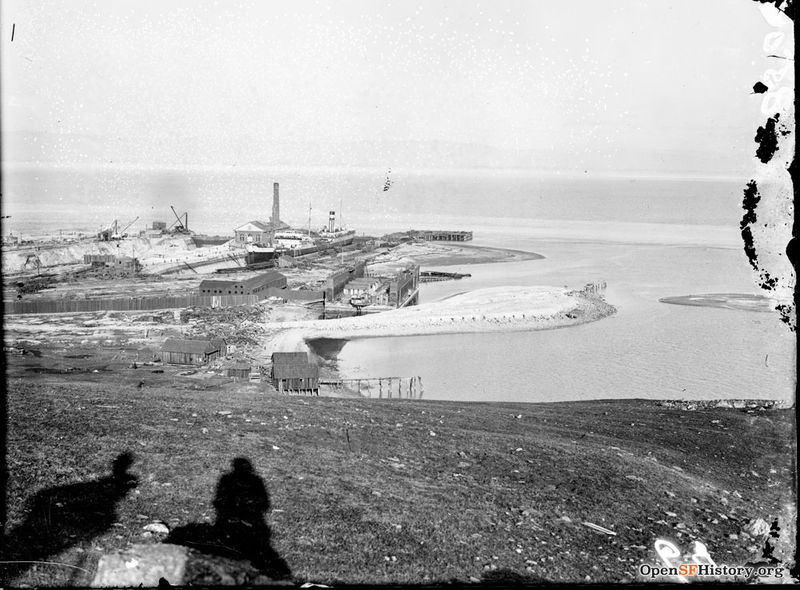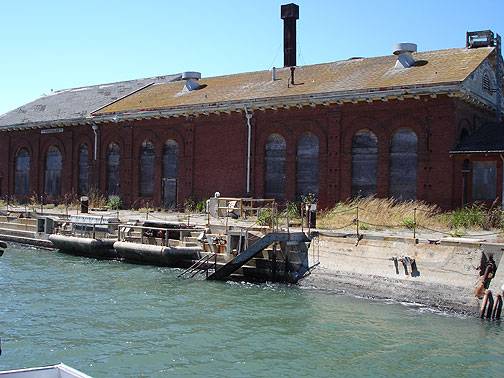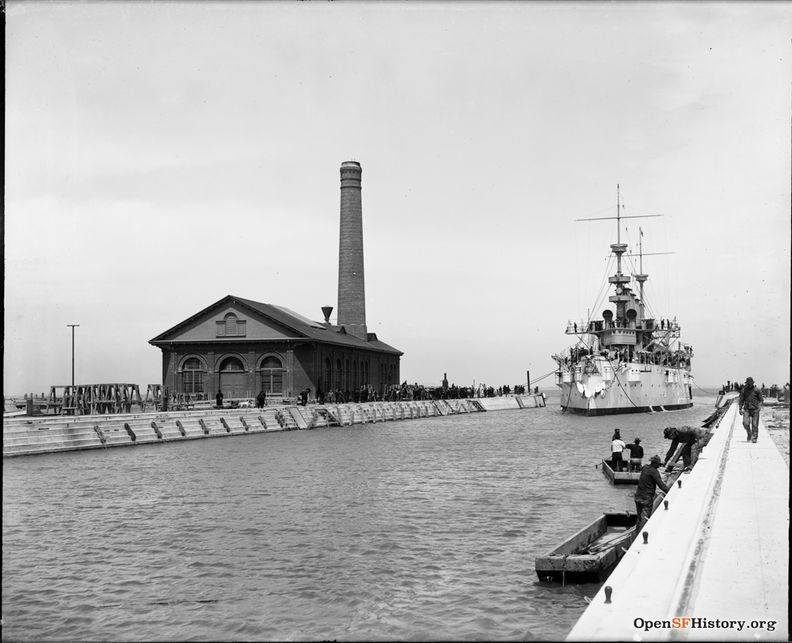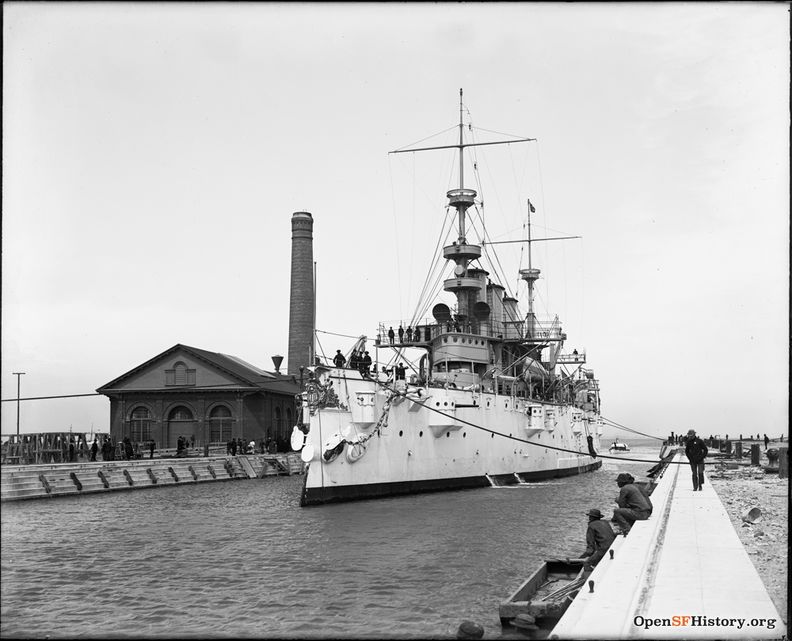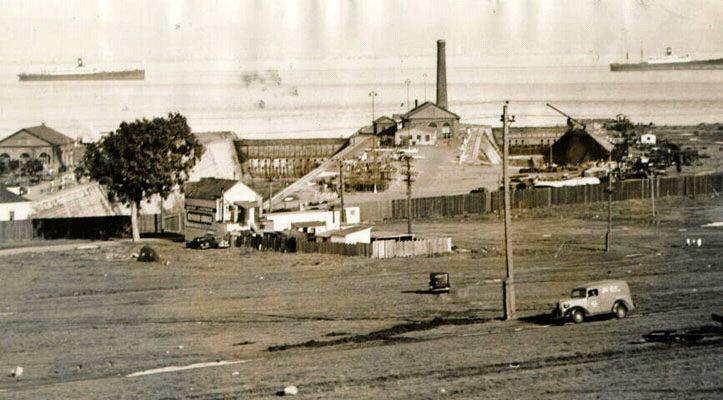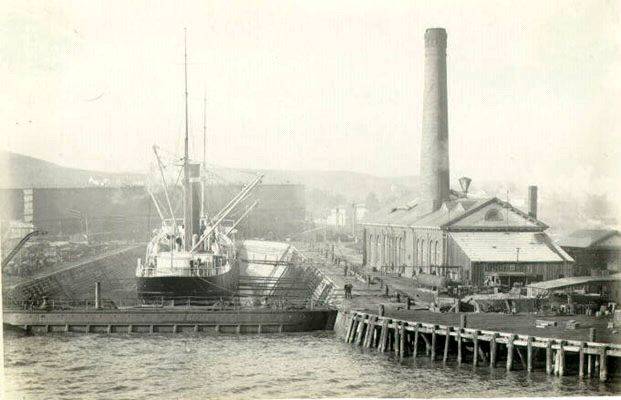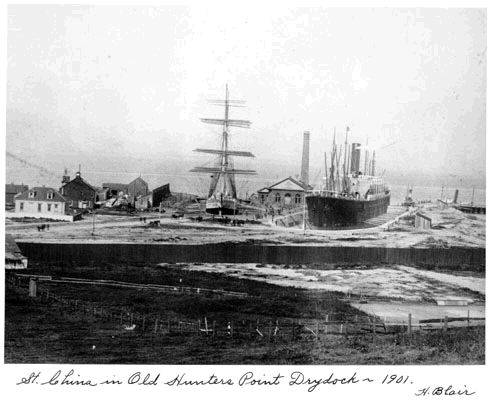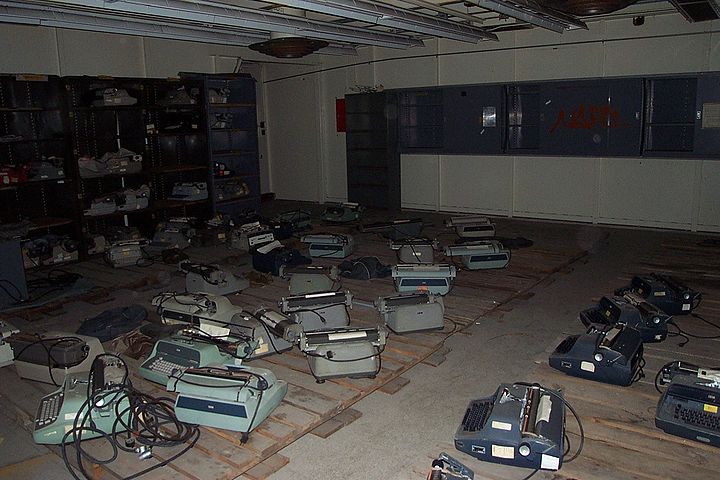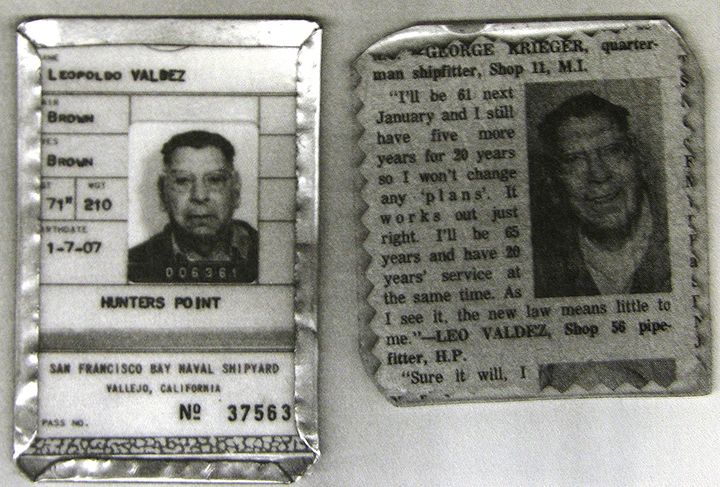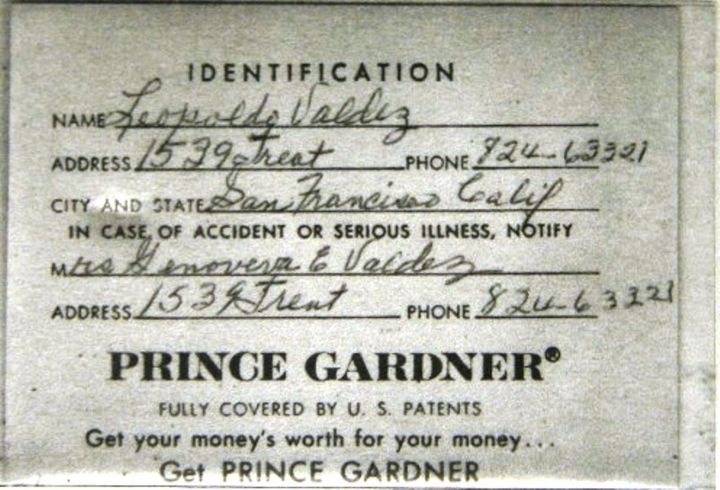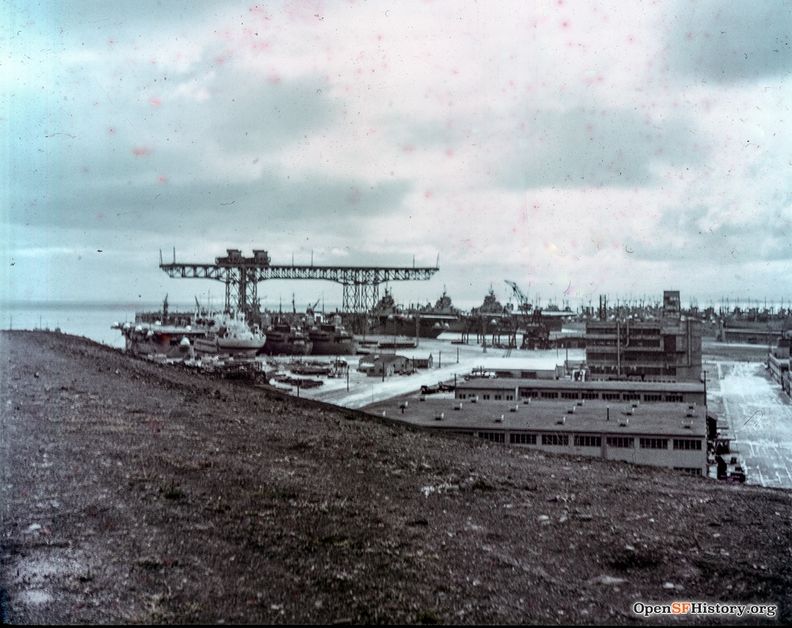Hunter's Point Naval Shipyard: Difference between revisions
(added postcard image) |
No edit summary |
||
| Line 117: | Line 117: | ||
'''Postcard image of drydocks in apx. 1910.''' | '''Postcard image of drydocks in apx. 1910.''' | ||
''Photo: | ''Photo: SFMemory.org'' | ||
[[Image:Destroyer-in-graving-dock-at-HP-1904.jpg|720px]] | [[Image:Destroyer-in-graving-dock-at-HP-1904.jpg|720px]] | ||
Latest revision as of 20:52, 22 December 2023
Unfinished History
BEGINNING OF HUNTERS POINT YARD'S GROWTH--Three months after Pearl harbor the narrow tongue of land projecting into San Francisco bay looked like this, with only one permanent building (at right) and two graving docks in existence. The high promontory, Point Avisadero (left), was pulled down into the bay to make San Francisco Naval Shipyard the huge installation it is today.
Photo: San Francisco History Center, San Francisco Public Library
Hunter's Point in 1941, Avisadero Point at top left of photo before its demolition.
Photo: US Navy
Hunter's Point Naval Shipyards, 1957, jammed with ships.
Photo: Prelinger Archives
Hunter's Point Naval Shipyard from the air, June 2006.
Photo: Telstar Logistics who has an incredible slideshow up on Flickr of "Modern Miltary Ruins of San Francisco"
This crane was used to lift massively heavy ships and shipboard equipment, but was also used to launch Polaris missile tests, as seen below in 1959. Easily visible as you drive from San Francisco International Airport to downtown San Francisco, this crane was built in 1947. A news clipping written at the time describes its intended purpose:
"WORLD'S LARGEST overhead traveling crane, capable of lifting battleship gun turrets and other huge sections weighing as much as a million pounds, is shown being erected by U. S. Steel's American Bridge Company in the San Francisco Naval Shipyard at Hunter's Point, California. Completion of the giant lift will make Uncle Sam fastest on the draw among the nations in the replacing of battleship guns. These large caliber weapons wear down their rifling in a comparatively few rounds. Then the guns and their turrets are exchanged for new ones or for those which have been reconditioned. Swifter repair service for fighting ships also will be made possible by the twin cranes that will operate singly or in tandem atop a bridge type runway 207 feet high. The 730-foot runway spans a pier 405 feet wide, extending 162 1/2 feet over the water on each side. Total of 8,400 tons of steel went into the runway structure and cranes."
Photo: Chris Carlsson
The caption reads: OPERATION SKYCATCH—This sequence shows how a huge overhead assembly at the San Francisco Naval Shipyard catches a multi-ton dummy Polaris missile in mid-air and keeps it from free-flight. Left to right: Powerful blast sends missile skyward. At top of its trajectory, it is snubbed by modified arresting gear engine. Then the dummy Polaris is lowered for examination removal of instrumentation, and preparation for next test. In earlier testings the missile was hurled out into San Francisco bay and then retrieved. Lockheed Missiles and Space Division, who released these pictures, said this new method permits accurate study on dummy missiles which are structurally identical in live Polaris missiles."
Photo: San Francisco History Center, SF Public Library, AAB-9041, hat-tip to Telstar Logistics
From Telstar:
The following information about Building 253 is taken from the "Hunters Point Shipyard Historical Radiological Assessment," a 2005 US Navy report that provides an inventory of impacted/contaminated buildings at the former San Francisco Naval Shipyard.
Site Description: Building 253 is a six-story concrete-framed, glass curtain-walled building built between 1944 and 1947. The building has a large gantry for the craning of equipment to the upper stories and a periscope tower extending vertically from the roof. Building 253 is attached to Building 211 The glazing for Building 253 is standard glass.
Former Uses: Radiography Instrument Calibration through; Gauge Shop; Electronics, Optical, and Ordnance Shops; Weapons Shop; Electrical Shop; Equipment from OPERATION CROSSROADS Ships; Maritime Administration Ship Parts Storage (1994); and Probable Location of Radium Paint Activities (Gauge Shop).
The caption on this photo reads: "EXTERIOR OF ORDINANCE AND OPTICAL SHOP, HUNTERS POINT--'One of the most beautifully detailed industrial buildings...'". Printed on back: "A periscope (inside the wooden case) being lifted up to the sixth floor Optical Shop for repair and calibration. How does all that glass get cleaned? Look closely near the corner and you will see an electrically operated two-man carrier suspended from the monorail above."
Photo: San Francisco History Center, SF Public Library, hat-tip to Telstar Logistics
Hunter's Point Building 253, 1948, Periscope workshop.
Photo: San Francisco History Center, SF Public Library, hat-tip to Telstar Logistics
Original caption on back: "View of the Sixth Floor Optical Shop where rangefinders from naval ships are overhauled and repaired. At the other end periscopes are stacked before or after being suspended up in the tower where they are checked by sighting on known points in the bay.".
<iframe src="https://archive.org/embed/remains-of-the-bay" width="640" height="480" frameborder="0" webkitallowfullscreen="true" mozallowfullscreen="true" allowfullscreen></iframe>
Curt Sanford explores San Francisco's eastern shoreline by kayak, from approximately Mission Creek to Candlestick Point State Recreation Area, including Warm Water Cove. His look at the old industrial waterfront includes great histories of various buildings in the old Naval Shipyard, as well as a good history of the Grain Terminal in Islais Creek, along with amazing shots of mysterious tags in dark spaces, brilliant murals, images of pelicans and herons and seals and more! Based on a presentation he gave at Heron's Head Ecocenter on July 1, 2017.
Hunter's Point Naval Shipyard, Drydock 4, 1952
Drydock 4 in 2002
Original caption on back: "THE CARRIER U.S.S. Boxer looms impressively in the background here as William Pengra (right) of the San Francisco Naval Shipyard points out sights to be seen by approximately 125 visiting businessmen from 14 coastal counties of Northern California here for a look-see at this city's facilities. Taking a 'preview' tour of the naval shipyard with Mr. Pengra are Frank Dana (left), chairman of the San Francisco Chamber of Commerce inter-city committee in charge of the 'Coastal Days in San Francisco' event which is bringing the visiting businessmen, and R.G. Holabird (center) chairman of the two-day program."
Photo: San Francisco History Center, SF Public Library, hat-tip to Telstar Logistics
View south from a ship on the bay, 2010, at the abandoned Hunter's Point Naval Shipyard buildings, soon to be demolished.
Photo: Chris Carlsson
Entering the old 1860s graving docks, 2010.
Photo: Chris Carlsson
The stone graving dock was completed at Hunter's Point in 1868... This photograph shows the Pacific Mail Steamship Company's coastwise steamer Montana in the dock about 1870. The paddle wheels of this wooden steamer were 43 feet in diameter.
Photo: San Francisco History Center, SF Public Library
Inside the graving dock, 2010.
Photo: Chris Carlsson
Hunter's Point graving docks c. 1910.
Photo: OpenSFHistory.org, wnp33.03943
Postcard image of drydocks in apx. 1910.
Photo: SFMemory.org
Destroyer getting serviced in graving dock at Hunter's Point, 1904.
Photo: Private collection
Hunter's Point Shipyard, c. 1900.
Photo: Western Neighborhoods Project/OpenSFHistory.org
Inside the graving dock, 2010.
Photo: Chris Carlsson
Hunters Point slip, c. 1900. Pumphouse with tall smokestack at end of pier.
Photo: OpenSFHistory.org wnp71.0345; GGNRA/Behrman GOGA 35346 G810 SH-592
Closer still...
Photo: OpenSFHistory.org wnp71.0346; GGNRA/Behrman GOGA 35346 G810 SH-593
The two brick pumphouses next to the graving docks, November 1919.
Photo: OpenSFHistory.org wnp37.04273
View of HP graving docks, late 1930s, looking east.
Photo: Private collection
Ship under repair in graving dock, early 20th century.
Photo: Private collection
1901 repair of St. China in graving dock.
Photo: Private collection
Dead typewriters in cryptography lab, 2002. All the light in this usually pitch dark room is provided by the camera flash.
Photo: Telstar Logistics
My Grandfather's Hunters Point Naval Shipyard work ID (left) Shop 56 Pipefitter Repairs, installs, and tests shipboard piping, refrigeration, and air-conditioning systems and components; and installs pipecovering and insulation.
Photo: Oldiesking58
My Grandfather Leo Valdez's ID card from Hunters Point Naval Shipyard.
Photo: Oldiesking58
Hunters Point Shipyard and Gantry Crane, c. 1949.
Photo: OpenSFHistory.org wnp25.4554

